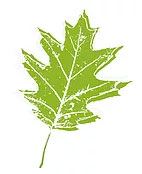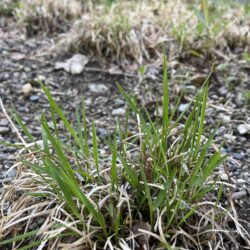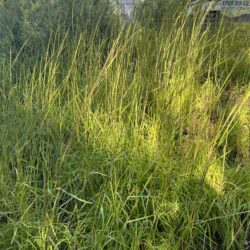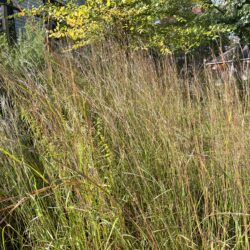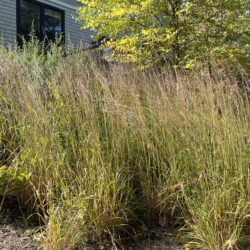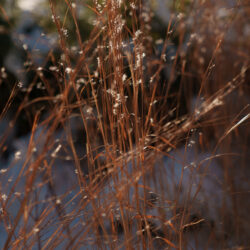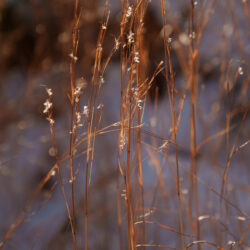Etymology
Schizachyrium comes from the Greek words schizo (to split) and achyron (chaff), referring to the plant’s divided lemma (specialized bract). Scoparium comes from the Greek word scopa (broom) and refers to the appearance of tufts formed by little bluestem.
Native Habitat
It is native to eastern North America and found in a range of habitats, including woodland edges, roadsides, slopes, prairies, plains, meadows, pastures, and savannas.
Garden Uses
Little bluestem is an attractive ornamental bunchgrass known for its fine-textured, blue-green foliage that turns beautiful shades of brown, copper, and crimson in the fall, often persisting through the winter. In the fall, purplish bronze seed heads give way to fluffy, white seed tufts, enhancing its winter appeal. Little bluestem is wonderful when planted en masse. It is great in borders, meadows, slopes, and can adapt to container plantings. It is highly resistant to browsing by deer. It readily reseeds, so those with small gardens should consider deadheading little bluestem.
Overview
Little bluestem is a perennial, ornamental, warm season grass with attractive foliage. The narrow upright clumps are slow to emerge in the spring, measuring 1-2 feet high until late summer when the stems elongate into flowering stems that reach 4 feet. It grows to about 1 foot wide. It performs best in average, dry to medium-moist, well-drained soil in full sun. It tolerates a wide range of soil conditions including infertility and clay. Once established, it has excellent drought resistance. Cut it back to 2-4 inches in the spring to make way for new growth in areas of high visibility, and consider using the clippings as mulch. As well as providing year-round cover for wildlife, little bluestem is a larval host plant to various butterflies and moths making it a great choice for a pollinator garden.
Spread
This is a clump-forming grass that may reach an above ground spread of about 2 feet.
Leaves and Stems
Slender, flat, linear leaves are about 1/4-inch wide. The leaves and stems of this grass have a blue tinge in summer, while the fall color is a very warm copper that does not fade throughout winter.
Flowers
Purple-bronze racemes form at the top of the leaves in late summer.
Fruit/Seed
Seed heads change from a beautiful purple-bronze to soft white tufts, adding to the plant's winter appeal. Some gardeners choose to remove the seed heads to control the spread of young seedlings.
Wildlife Associates
Little bluestem is an excellent plant for wildlife. It serves as a larval host for several species of skipper larvae, as well as the Common Wood-Nymph (Cercyonis pegala). Other insects that feed on little bluestem include grasshoppers, Prairie Walkingsticks, the leaf-mining beetles, thrips, spittlebugs, and leafhoppers. The seeds of this grass are eaten by songbirds. Little bluestem provides necessary overwintering habitat and resources for many insects and birds. Female bumble bee queens nest at the base of bunch grasses like little bluestem, where they are protected until they emerge in spring.
Propagation
Propagate by seed or by dividing established clumps. This species and most other grasses are best divided and planted in the spring to allow the full season for their roots to develop.
Garden Location
Patio Garden, Staff Entry Garden (see garden map)
Anecdotal Information
It starts out slowly in our climate, growing more quickly during summer until its foliage reaches full height by September. For much of the spring and early summer it is a low-growing grass clump. It grows well on a dry slope in the NGBH garden, in full to part sun where plugs were planted near the base of the stairs to the deck and the rest was established from seed.
Sources
Iowa State University
Lady Bird Johnson Wildflower Center
North Carolina Extension Gardener Plant Toolbox
Prairie Moon Nursery
Wisconsin Horticulture Division of Extension
Plant Profile by Rachel Emus
